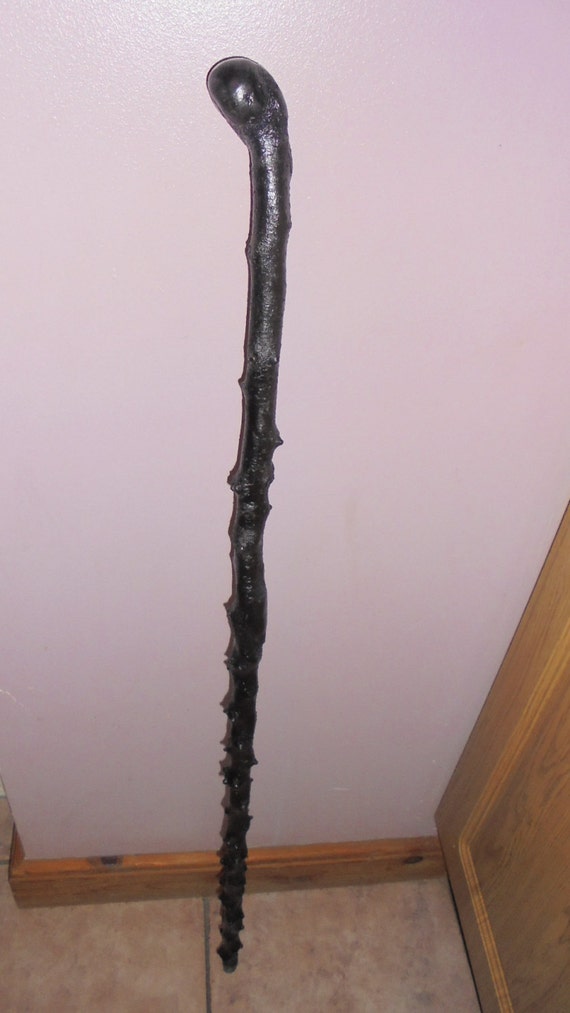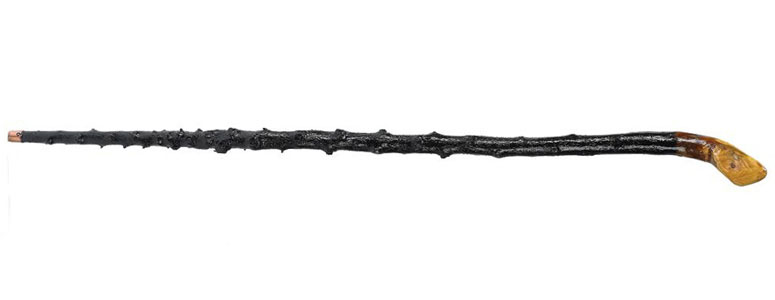
Kathy Greensides is Collection Assistant at the Museum. As a side note, a collector of walking sticks is called a rabologist. Some examples are highly prized and sought after by collectors. Today, walking sticks tend to be used to aid walking or for hiking. Originally used for both walking and as a weapon, shillelagh fighting has a long tradition in Ireland and is still practiced today, with precise rules. It was then painted with black paint or even magpie blood (a common wood stain at the time) to give a dark patina. It was then treated in one of three ways: by covering in butter or lard and putting it up a chimney to cure, by soaking in brine, or by burying in a pile of dung. A likely branch would be cut from a tree. He was named to the Shillelagh Tournament All-Tournament Team. The fifth match was between shillelagh in the groin of Khali. In 1897 Killinure arrived and beat Shillelagh in their first match. The Irish shillelagh or Scottish kebbie are simple knotty sticks, usually made from blackthorn, with a large knob at one end. I started carrying a Scottish shillelagh around with me after that, The shillelagh is the wooden club that goes to the winner. Grips from nine different walking sticks, from left to right: Scrimshawed ivory grip on engraved shaft Whalebone stick with lover’s knot grip Knotty shank with ivory grip in the form of a clenched fist Ebony shaft with silver-plated head of William Shakespeare Umbrella stick with wood and silver-plated grip Ebony stick with elephant head grip and inlaid ivory dots Wooden stick with carved oriental warriors Barley twist stick with wire binding Shillelagh. The head of William Shakespeare adorns the grip of another ebony stick.

One handsome example is made from a dark wood and has a carved elephant head, complete with ivory tusks and inlaid with small ivory dots. One has a concealed umbrella while another has an ivory grip with a scrimshawed image of a Japanese warrior brandishing a sword. The Whanganui Regional Museum has a large collection of sticks and canes with interesting grips made from a many different materials and in many different styles. Americans, however, usually refer to walking sticks as canes.

Canes are made from bamboo, rattan, Malacca or hardy reeds. Sticks can be made of ivory, metals, whalebone and assorted woods. The difference between a walking stick and a cane is the materials of which they are made. These became especially popular much later during the prohibition years of the USA. Another novelty were tippling canes, or tipplers, with hidden vials used to carry alcohol. Cane guns, which housed hidden single or double-barrelled shotguns, were also available. WRM Ref: 1968.92, 1929.75įorfeiting a cane could have proved dangerous as some contained hidden swords. Send us feedback.Cane gun and sword cane: Combination walking cane and shotgun at top and a sword cane with the sheath made of blackthorn. These example sentences are selected automatically from various online news sources to reflect current usage of the word 'shillelagh.' Views expressed in the examples do not represent the opinion of Merriam-Webster or its editors. Margaret Hartmann, Daily Intelligencer, 19 July 2017 2019 McConnell is also giving conservatives a shillelagh with which to beat Republican moderates who fail to go along with repeal, and perhaps even to mount primary challenges against them in 2018 or beyond.

2022 So in a team meeting, Helton hit all the historical notes, even giving a tutorial on the shillelagh that goes to the winning team. 2022 Alabama played a competitive first half of its NCAA tournament opener Friday against Notre Dame, but then took a whack from the Fighting Irish’s shillelagh in the second half to end its season with a 78-64 loss.

Recent Examples on the Web The shillelagh, a tall walking stick, was also a protection against large animals.īrenda Yenke, cleveland, 24 Mar.


 0 kommentar(er)
0 kommentar(er)
